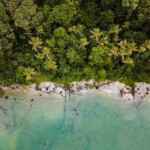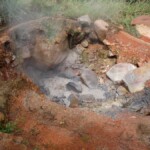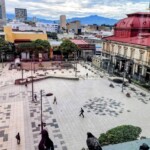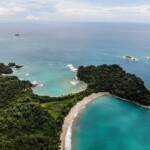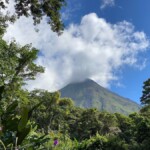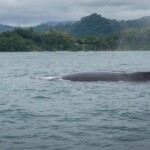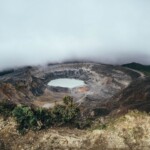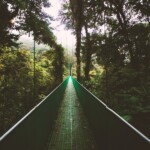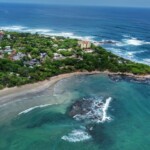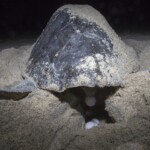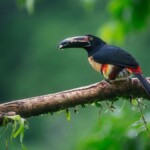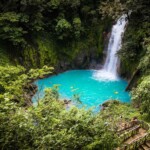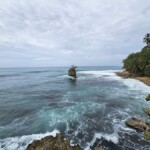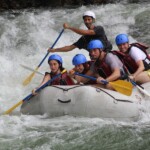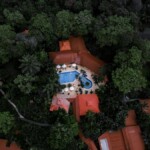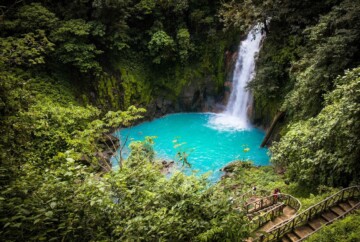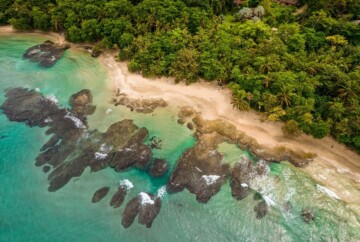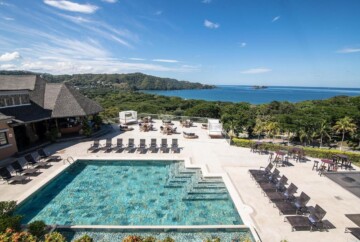There are so many incredible places to visit in Costa Rica, from lush forests full of wild fauna and stunning paradisiacal beaches to turquoise-blue waterfalls, hot springs, and otherworldly volcanoes.
Hands down, Costa Rica is one of my top 3 travel destinations to date, and we had an amazing adventure of gastronomy, relaxation, and wildlife photography during our 2-week trip through Costa Rica. This trip was special to me for another reason: I traveled with my brother and three of my cousins, so we enjoyed some partying, refreshing Imperial beers, and incredible sunsets on the beach.
If you want to plan your own trip, this guide will tell you what to see in Costa Rica for an unforgettable time. I’m sharing the absolute must-dos since, unless you’re spending a couple of months here, you can’t do everything in one trip.
Before counting down the 20 best things to see and do in Costa Rica, you should know that many of the country’s national parks require you to buy a timed ticket online in advance. This prevents these protected spaces from becoming overcrowded with tourists, but it also means you must plan some things in advance.
While your itinerary still has room to improvise, one thing you should never leave to chance is your safety. I highly recommend getting travel insurance for Costa Rica, because while the country is safe, there are lots of water sports, outdoor activities, and places where you can run into wildlife. We’ve been using Heymondo for years and it’s perfect for us, so if you’re interested, use our Heymondo discount code to save on your policy.
1. Visit San José, an essential thing to do in Costa Rica
Located in the heart of the country, San José is the capital of Costa Rica and exudes a humble mix of tradition and culture. While many people travel to Costa Rica for its rainforests and beaches, San José has a distinct atmosphere of its own. Many people end up spending an extra night here just to have more time to experience its culture, food, and art.
The majority of San José’s cultural attractions are neatly collected in the city center. This area pulsates with activity and life, so it’s a must-see in Costa Rica.
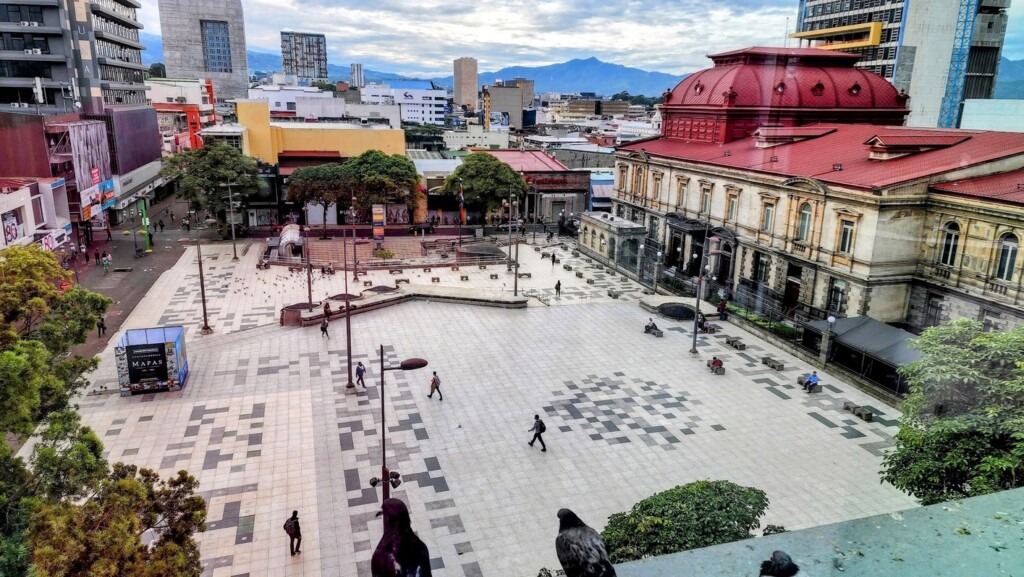
1. Visit San José, an essential thing to do in Costa Rica
We took this free tour from the National Museum of Costa Rica and learned a lot about the history, art, and gastronomy of San José. David, our guide, was awesome, and we had so much fun. If you go on your own, make sure you visit the Plaza de la Cultura on Central Avenue, the Pre-Columbian Gold Museum, and the National Theater.
You should also see the Central Market, a labyrinth of colors, flavors, aromas, and sounds with more than 200 fruit, coffee, and spice stalls. San José has some of the best restaurants in Costa Rica, so I recommend grabbing a bite to eat at a traditional soda (locally-owned restaurant).
Other places of interest in San José include the Plaza de la Democracia with its lively open-air markets, the National Museum of Costa Rica, and the Jade Museum for insights into Costa Rican culture.
2. Manuel Antonio National Park, another amazing place to visit in Costa Rica
Manuel Antonio National Park‘s rich biodiversity makes it one of the most important places to visit in Costa Rica. Here, you’ll find beautiful beaches, nature trails, and a dense tropical jungle full of animals.
The park’s two main beaches, Playa Manuel Antonio and Playa Espadilla Sur, are about a 30-minute walk from the main entrance. The first offers spectacular views, but if you’re looking for some quiet time away from the crowds, it’s worth the extra walk to the second beach. Both beaches are incredible places to see in Costa Rica.
Of course, if there’s one thing that made me fall in love with this park, it is the incredible variety of animal species in Costa Rica that live here.
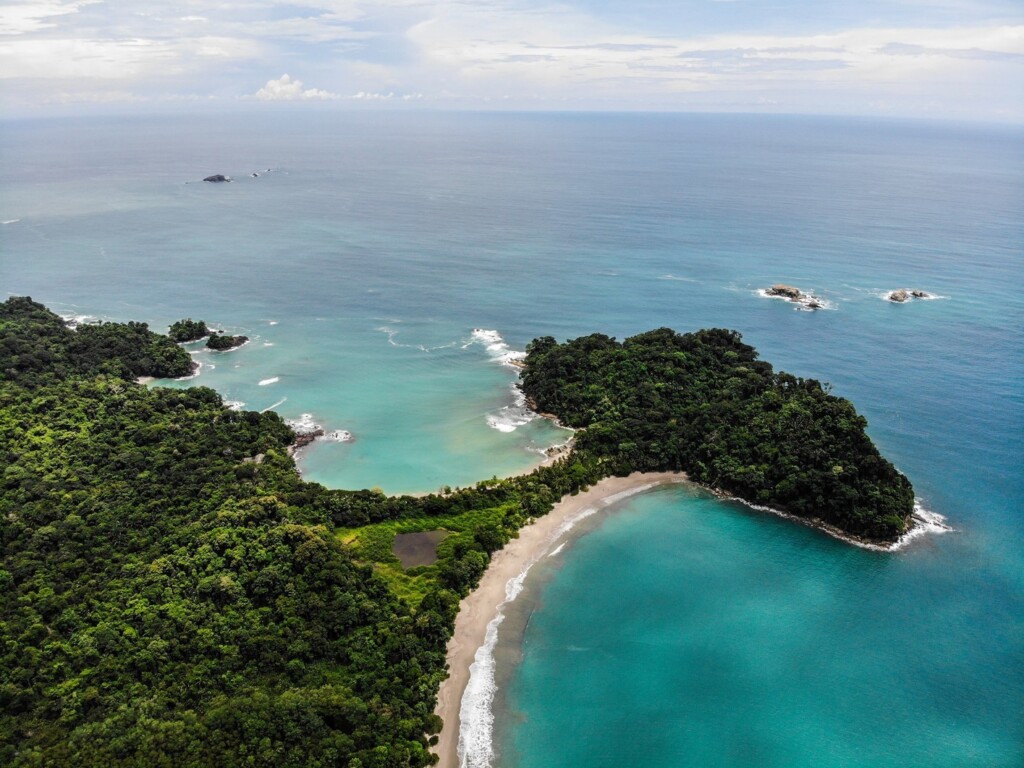
2. Manuel Antonio National Park, another amazing place to visit in Costa Rica
While you can spot some animals on your own, there are smaller critters that you’ll surely miss, so I recommend hiring a guide. We took this tour, and it was totally worth it since half the creatures our guide pointed out we weren’t even aware of. For our next trip to Costa Rica, we plan to do this night tour so we can see all the nocturnal species that aren’t out during the day.
In addition to the jungle animals, Manuel Antonio has thousands of different types of sea creatures in its waters, including humpback whales. If you’re like me and love seeing cetaceans in the wild, I highly recommend the catamaran ride we took.
On the other hand, this cruise through the Isla de Damas mangroves is also interesting, and you can find even more recommendations in our guide to Manuel Antonio National Park.
3. Arenal Volcano National Park and La Fortuna Waterfall, two of the best places to see in Costa Rica
Arenal Volcano National Park is home to the iconic Arenal Volcano, one of the top attractions in Costa Rica. Although climbing the slopes of the Arenal Volcano is not permitted due to it being an active volcano, visiting this national park is a must-do. Here, you can immerse yourself in a rainforest ecosystem and see its biodiversity first-hand. I recommend walking along one of the nature trails; we took the Las Coloradas route and enjoyed seeing the solidified lava from previous eruptions.
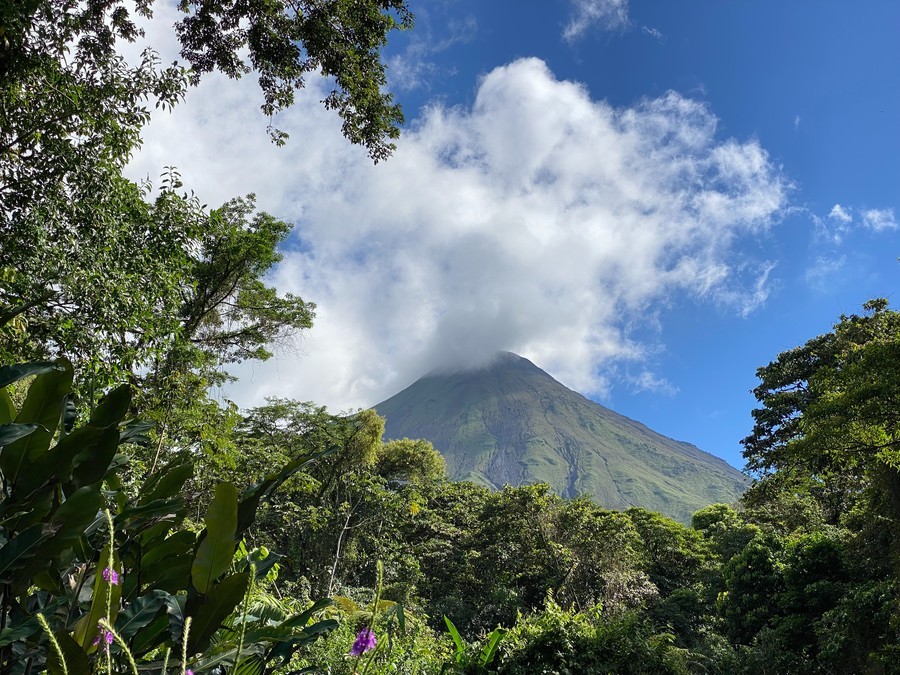
3. Arenal Volcano National Park and La Fortuna Waterfall, two of the best places to see in Costa Rica
As I mentioned in our guide to Arenal Volcano National Park, the area is surrounded by several hot springs and the incredible La Fortuna Waterfall. To get to the waterfall, you must descend over 500 steps, but there are rest areas along the way.
If, like us, you want to maximize your day here, I recommend this tour, which includes a hike along the Las Coloradas trail, swimming at the base of La Fortuna Waterfall, and a relaxing soak in the hot springs.
Another interesting option, especially if you prefer adventure, is this excursion that goes to the hanging bridges of Mistico Park instead of the hot springs. Both tours depart from La Fortuna, so I recommend staying in this town to make things easier.
4. Marino Ballena National Park, one of the coolest destinations in Costa Rica
Marino Ballena National Park is a fascinating place on the Southern Pacific coast and was the first marine national park in the country. It has four entrances: Uvita, Colonia, Ballena, and Piñuela. The first two are the most popular since they’re open daily from 7:00 a.m. to 6:00 p.m.

4. Marino Ballena National Park, one of the coolest destinations in Costa Rica
This park is one of the best places to go whale watching in Costa Rica, so it’s no surprise why I consider it one of the best Costa Rica attractions. I highly recommend taking a tour to visit the whale tail-shaped peninsula in Punta Uvita, where paradisiacal beaches and tropical forests await.
We did this tour from the town of Uvita and had a wonderful time. We saw a mother humpback whale with her baby, which was quite lucky since we went in October. The best time to see humpback whales in Costa Rica is in August and September, and the Annual Uvita Whale Festival is held during the first few days of September.
You can also spot humpback whales from January to March, although there’s never a bad time to visit since this is one of the best national parks in Costa Rica.
5. Visit Poás Volcano National Park and La Paz Waterfall, another great thing to do in Costa Rica
Poás Volcano National Park is one of the best spots in Costa Rica for adventurers. Situated over 2,000 meters (6,500 feet) above sea level, in the middle of a cloud forest, this geyser is in one of the largest craters in the world.
As I explain in our guide to visiting the Poás Volcano, you can take an excursion from San José since the capital is just 50 km (31 mi) away, or about a 1.5-hour drive. Along the way, you can enjoy an incredible view of the valley and pass by local shops selling souvenirs and fresh produce.
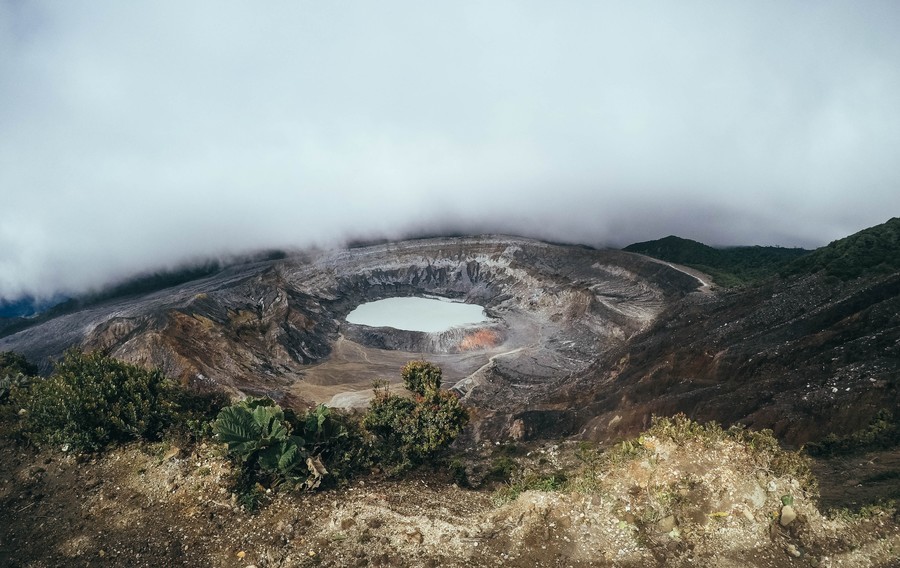
5. Visit Poás Volcano National Park and La Paz Waterfall, another great thing to do in Costa Rica
Plus, the views within the national park are super impressive. Once inside, take the walking path to the observation point, which has viewing platforms for the crater.
About 21 km (13 mi) from the Poás Volcano, Vara Blanca and Cinchona are home to another interesting place in Costa Rica: the La Paz Waterfall. It’s about a 35-minute drive, but you can make this easier by booking this excursion that goes to both places. We took this tour, and I highly recommend it.
The La Paz Waterfall is one of the most beautiful waterfalls in Costa Rica. You can see it from the main road, but you really have to enter the park to appreciate its majestic beauty. Besides, there are four other waterfalls in the 28-hectare (69-acre) park: Templo, Magia Blanca, Encantada, and Escondida.
Even if you aren’t in the best shape, you shouldn’t have a hard time on the trails, so you can enjoy the splendid views.
6. Cahuita National Park, a very touristy place in Costa Rica
Cahuita National Park is full of white sand beaches, lush jungles, and abundant wildlife, so it’s the perfect attraction in Costa Rica for nature enthusiasts. We have a whole guide to Cahuita since it’s one of our favorite destinations. It’s not far from Puerto Viejo and it’s the most accessible national park in the southern Caribbean. There are several entrances, including the Puerto Vargas one, which is free, and the Puerto Viejo one, which requires a ticket.
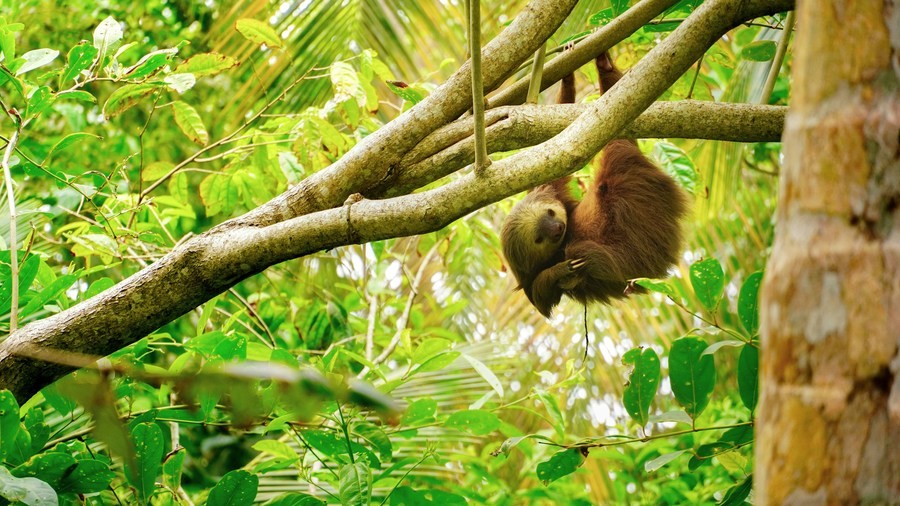
6. Cahuita National Park, a very touristy place in Costa Rica
We used the Playa Blanca entrance, which is donation-based. It was part of this tour, which included a naturalist guide who pointed out all the distinct fauna in the park. We saw countless white-faced monkeys, coatis, snakes, and birds. Our guide, José, told us that the rivers there often have alligators, but we didn’t see any. That said, Cahuita is one of the best places to see sloths in Costa Rica, and we saw 5 in just 30 minutes.
What impressed me the most about this park was the snorkeling; it was the best place we snorkeled in the country, and maybe the world. To give you an idea, the park covers 1,200 hectares (3,000 acres) of land and 22,300 hectares (55,000 acres) of protected marine area. It was created to protect the largest coral reef in Costa Rica, with 35 species of coral and over 100 species of fish, mollusks, crustaceans, and sea turtles.
Here, snorkeling on your own is prohibited, so if you want to witness the seabed for yourself, you must book a tour.
7. Monteverde Cloud Forest Biological Reserve, another place to see in Costa Rica
The Monteverde Cloud Forest Biological Reserve is one of the most famous places in Costa Rica, and the perfect destination for hiking and bird watching. Unfortunately, cloud forests are highly vulnerable and sensitive to climate change, so I recommend visiting them while they still exist.
There are three reserves in Monteverde: the Monteverde Cloud Forest, the Santa Elena Cloud Forest, and the privately managed Children’s Eternal Forest. The Monteverde Cloud Forest Reserve is the most popular, with nine well-maintained trails leading to beautiful viewpoints, a suspension bridge, and a waterfall. The Nuboso and Ventana trails have the best views, although if you walk the Cloud Trail, you’ll be able to see the Caribbean Sea and the Pacific Ocean.

7. Monteverde Cloud Forest Biological Reserve, another place to see in Costa Rica
Our guide to visiting Monteverde, Costa Rica, has all the details on this magnificent place, but I’ll tell you here that ziplining is a must-do. I recommend this zipline and hanging bridge tour to fly above the cloud forest. It’s an adrenaline-pumping activity in Costa Rica, the perfect mix of nature and adventure.
In addition, the biodiversity in Monteverde is incredible, but the vegetation is dense. The best way to spot animals is by taking a guided tour, like the one we did. Keep in mind that Monteverde comes alive at night since most of the species that live here are nocturnal. For example, two-toed sloths are much more active at night, so you can see them on this wildlife night tour.
8. Spend the day at Tamarindo and other beaches in Guanacaste, Costa Rica
Tamarindo has some of the most beautiful beaches in Guanacaste, and they’re some of the best in Costa Rica. This area is popular among surfers, thanks to its perfect year-round waves. Tamarindo is also close to the Liberia Airport and has a nice tourist hub, so it’s also a great destination for families and couples taking a honeymoon in Costa Rica.
As soon as we arrived, we took this boat tour to see the Tamarindo mangrove and estuary, which is part of Las Baulas National Marine Park. Our captain, Roberto, told us all about the importance of this natural environment and its preserved forests. At night, we took this tour to watch turtles nesting, and while we only saw green turtles, olive ridley and leatherback turtles come here, too. It all depends on when you go, so check out our guide to sea turtles in Costa Rica for more information.
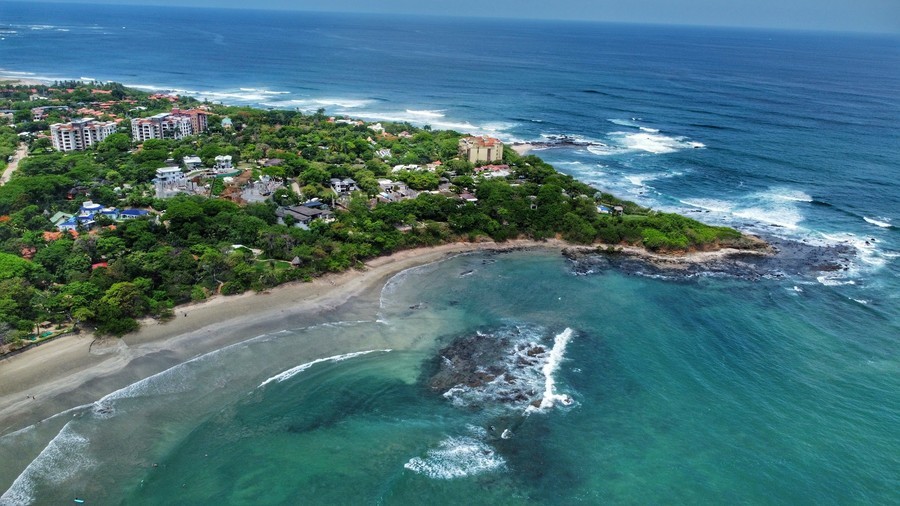
8. Spend the day at Tamarindo and other beaches in Guanacaste, Costa Rica
The next morning, we explored some of the beaches in Tamarindo and thought they were the most stunning beaches we saw in the country. You can walk to Playa Langosta or drive to Playa Grande, Playa Avellana, or Playa Conchal. The latter is 40 minutes away, but it’s also where you can take a horseback ride along the shore, so it’s worth it.
Later, we took this catamaran cruise with snorkeling, which was a blast. We loved how we spent our day, but there are other interesting things to do in Tamarindo if you have more time. In fact, you can spend a few days discovering the province of Guanacaste and all its interesting attractions.
9. Tortuguero National Park, another national park to visit in Costa Rica
Tortuguero National Park is one of the main destinations in Costa Rica for ecotourism, and is an important nesting place for green turtles. The park even has a protected beach designated for turtle nesting. The rich biodiversity here includes habitats ranging from mangroves, beaches, swamps, tropical jungles, canals, and lagoons.
Moreover, the 30,000-hectare (74,000-acre) park forms a natural corridor with a protected reserve in neighboring Nicaragua. The park is on a sandbank, so it’s impossible to visit Tortuguero, Costa Rica, by car. Instead, you have to take a 1 to 2-hour boat ride from La Pavona, which is about three hours from San José.
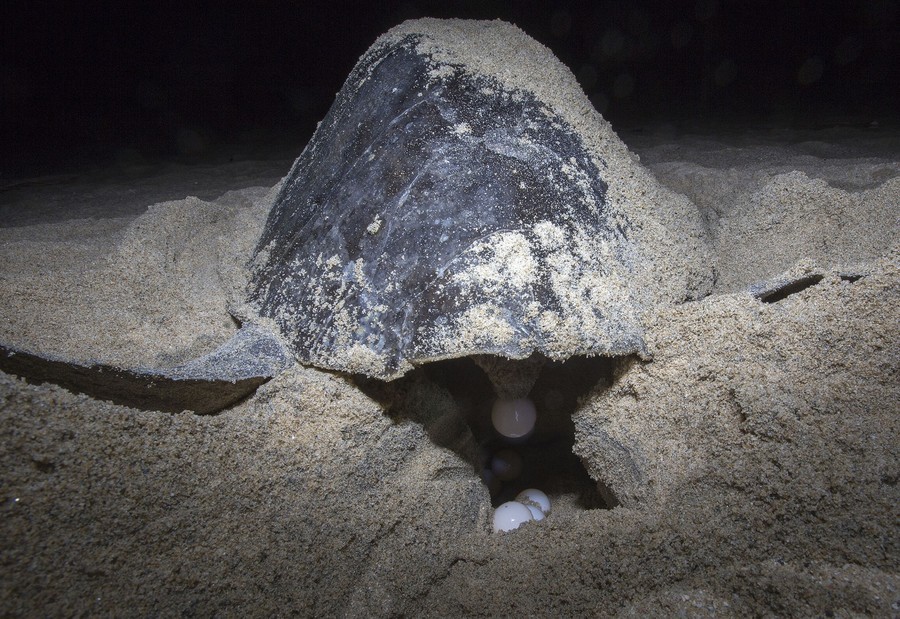
9. Tortuguero National Park, another national park to visit in Costa Rica
Another option is this 3-day excursion from San Jose or this day tour if you’re short on time. Both excursions include a canoe tour similar to the one we took, in which you’ll explore the Tortuguero canals in search of caimans, snakes, monkeys, all kinds of birds, and, if you’re lucky, jaguars and manatees.
Of course, you can’t miss watching the turtles nesting. The only way to do this is with a guide, and only a certain number of visitors can enter per day, so you must book a spot in advance.
Lastly, there are several great park trails, with the Jaguar Trail being the most popular. It’s a 5-km (3-mi) circular route that runs parallel to Tortuguero’s main beach. You’ll notice several numbered signs along the way, which help park rangers identify turtle nests.
10. Corcovado National Park, a very beautiful place to visit in Costa Rica
Corcovado National Park is another one of the most biodiverse places on earth, so visiting it is a must-do in Costa Rica. In addition to nature trails and wildlife viewing, you can go camping in this spectacular park.
To reach Corcovado, you must take a boat from Sierpe or drive a 4×4 vehicle from Puerto Jiménez. The former is the easier option, and the one most people choose. The boat drops you off at Drake Bay, where the main attractions, hotels, and restaurants are, as well as where most park tours depart.
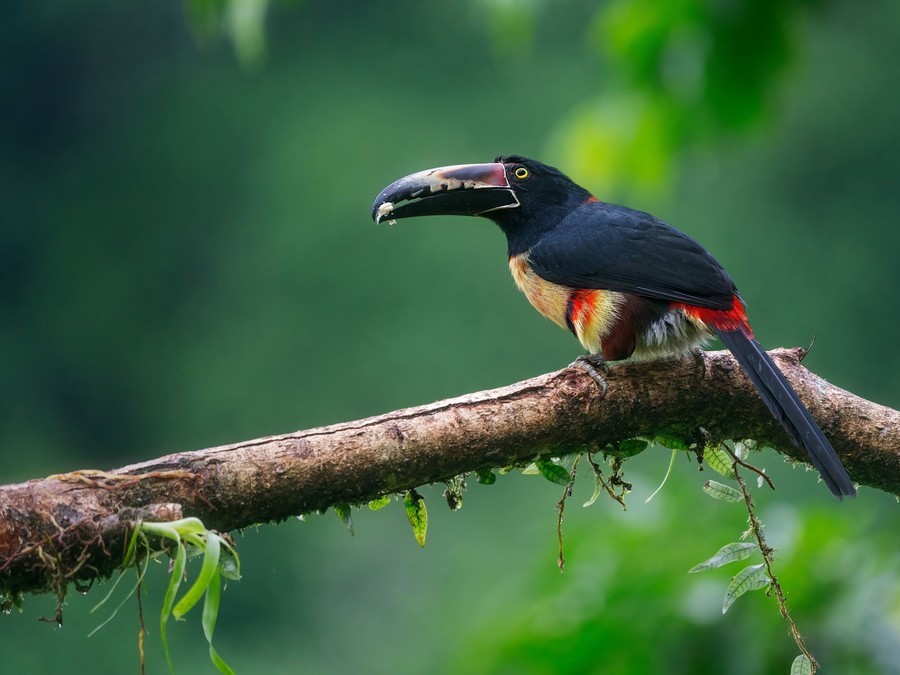
10. Corcovado National Park, a very beautiful place to visit in Costa Rica
The most popular areas within the park are Sirena Station and San Pedrillo Station. Here, as I mentioned in our guide to Corcovado National Park, you can spot animals like tapirs, ocelots, jaguars, and even pumas. However, you’ll need quite a bit of luck.
If you’re short on time, this tour is the best option, as it includes a direct boat from Sierpe and a tour of San Pedrillo. However, if you can, I highly recommend doing the tour we took, which includes an overnight stay at Sirena Station—undoubtedly one of the best things to do in Drake Bay.
And if you have some extra time, venture beyond Corcovado’s jungle. We took this snorkeling tour on Isla Caño, and we absolutely loved it!
11. Puerto Viejo, one of the best cities to visit in Costa Rica
Puerto Viejo has a vibrant, Caribbean reggae atmosphere that stands out from the rest of the country. Located in the province of Limón, on the southern Caribbean coast, it’s a top tourist attraction in Costa Rica, thanks to its mix of cultures, stunning beaches, and abundant wildlife. Here, you can try the most delicious food and try something other than the typical dishes of Costa Rica.
While it’s not big, there are lots of things to do in Puerto Viejo, so it attracts visitors from all over the world. Within its 30-km (18-mi) radius, you’ll find Cahuita National Park, the Gandoca-Manzanillo National Refuge, the Jaguar Rescue Center, and some of the best beaches in Costa Rica, like Playa Cocles, Playa Chiquita, Punta Uva, and Manzanillo.
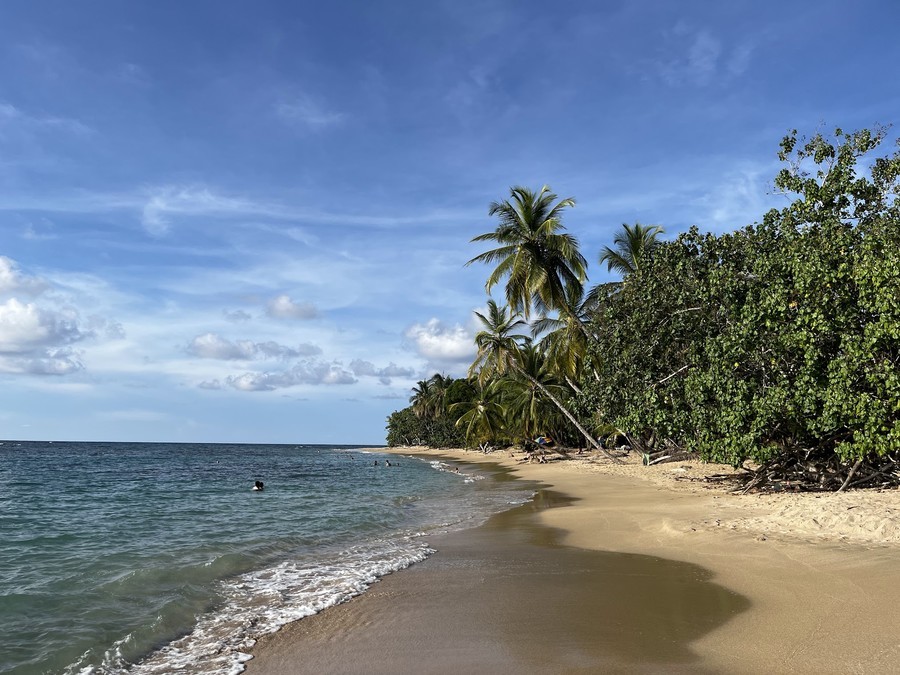
11. Puerto Viejo, one of the best cities to visit in Costa Rica
Best of all, each of these places is less than a 30-minute drive away, making Puerto Viejo one of the best places to visit in Costa Rica. Moreover, you don’t have to drive at all to go to the beaches. The best way to get there is by renting a bicycle and enjoying the journey.
In addition, Puerto Viejo is the ideal place to see sloths. You can usually spot them along the beach or the roads, perched in the trees. Keep your eyes peeled!
12. Río Celeste and Tenorio Volcano National Park, another must-see attraction in Costa Rica
Tenorio Volcano National Park is best known for being the site of the Río Celeste, a strikingly turquoise river with a stunning waterfall. Visiting this scenic area is one of the most popular things to do in Tenorio Volcano National Park, and along the way, you can see the Blue Lagoon, the Borbollones, and the Teñideros hot springs.
If you’re up for some sightseeing in Costa Rica, Río Celeste won’t disappoint. Its waterfall is around 30 meters (98 feet) high and descends into a pool of bright blue water. Swimming is prohibited here, but in our guide to visiting Río Celeste, I share some other places where you can take a dip less than 10 minutes away.
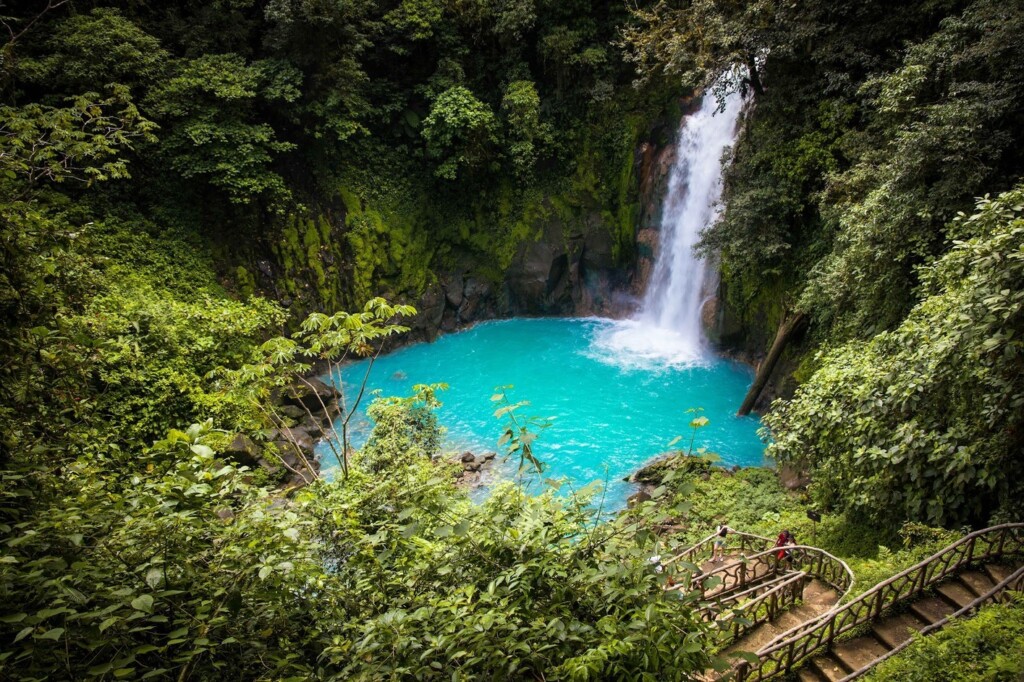
12. Río Celeste and Tenorio Volcano National Park, another must-see attraction in Costa Rica
In any case, it’s worth hiking this route and going beyond the waterfall. My favorite part was seeing the Blue Lagoon, as well as a friendly coati passing by. While the 5.5 km (3.4 mi) trail isn’t too difficult, some sections are pretty steep, especially the 250 steps descending to the base of the waterfall. It’s a worthwhile activity in Costa Rica, but make sure to include in your packing list for Costa Rica closed-toe shoes to protect your feet from the rocks and tree roots.
If you don’t have a way to get there, this tour from La Fortuna is the best option and will allow you to spend the whole day in the park.
13. Gandoca National Refuge – Manzanillo, one of the most beautiful places in Costa Rica
The Gandoca Wildlife Refuge in Manzanillo is in the southern Caribbean, very close to the border with Panama, and contains an important rainforest, wetland, and mangrove swamp. The refuge is home to a wealth of species, including alligators, crocodiles, sloths, turtles, toucans, parrots, and much more.
However, as I explained in our guide to Manzanillo, Costa Rica, the refuge also has virgin white sand beaches, small coves, and picturesque cliffs. You can visit on your own, but if you want to see all the wildlife, you should take this half-day tour led by a naturalist guide. They’ll help you get the most out of your visit and learn what makes this ecosystem unique.
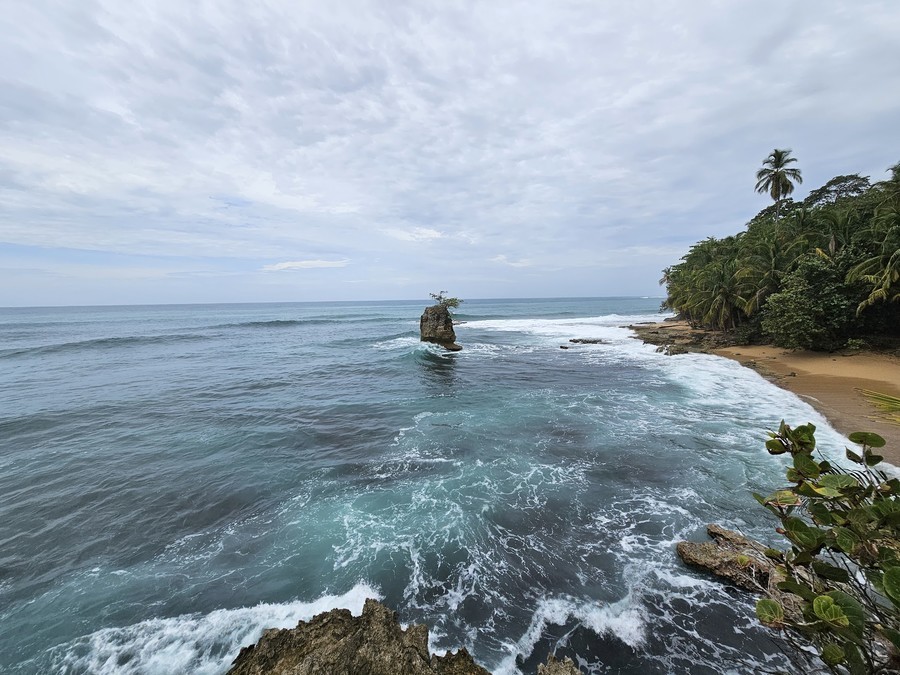
13. Gandoca National Refuge – Manzanillo, one of the most beautiful places in Costa Rica
Walking along the trails of this beautiful Costa Rica attraction is one of the best ways to spend your time. However, pay attention to the timing of your visit; during the rainy season, the roads may be muddy and difficult to navigate. Even so, the refuge’s remote location means that you can spot wild critters that you won’t find in the country’s other national parks. Plus, there are way fewer tourists.
If you’re like us and have a passion for photography, follow the path at the end of Manzanillo Beach for spectacular views. Then, continue along the coast to Punta Mona, another dreamy beach.
14. Rafting on the Pacuare River, an exciting thing to do in Costa Rica
Rafting on the Pacuare River is one of the most exhilarating things to do in Costa Rica. The Pacuare River is in the Talamanca mountain range and flows into the Central Caribbean coast, specifically in the province of Limón.
If you do the excursion we did, you’ll see why this river is one of the best in the world for rafting. The tour includes pick-up in San José and goes through 30 km (18 mi) of Level III and Level IV rapids.
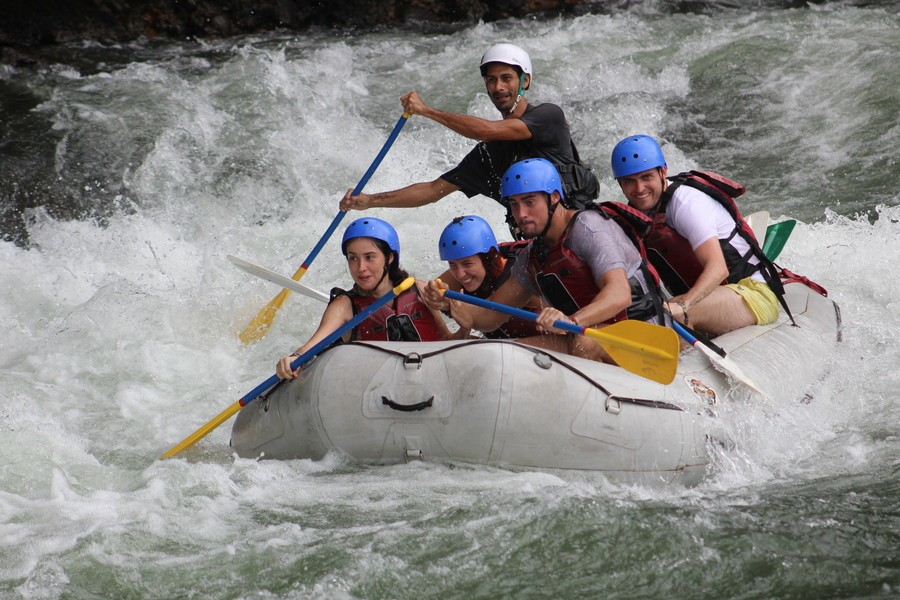
14. Rafting on the Pacuare River, an exciting thing to do in Costa Rica
If you didn’t know, the rapids here are classified into Levels I through V, with V being the most difficult. Although it was my first time rafting, I felt safe the entire time (although my face says otherwise). Our guide, Pedro, knew all about navigating these rapids, and there was a rescue kayak in case of an emergency. Make sure you follow all the guide’s instructions and properly wear your safety helmet and life vest. And if you want a tamer experience, check out our Costa Rica rafting guide for more options.
Some other popular rafting excursions are this one from Manuel Antonio, which goes to the Savegre River, and this one from La Fortuna, which takes you rafting on the Sarapiquí River.
15. Diving in Cocos Island, an interesting activity in Costa Rica
Diving is a popular activity in Costa Rica, and the UNESCO World Natural Heritage Site of Cocos Island is one of the best places in the world for diving.
This is a super-remote island, so you must book a multi-day excursion (about 10 days) to visit it. Moreover, the island is about 500 km (310 miles) off the Pacific coast and doesn’t have any hotels or services. Only the park rangers who take care of the island live here.
It’s not a cheap expedition, but it’s one of the coolest things to do in Costa Rica and a once-in-a-lifetime experience. You’ll be able to disembark on the island once or twice to explore the trails and waterfall, but most of your time will be spent on the boat or on the water, enjoying the impressive marine life.
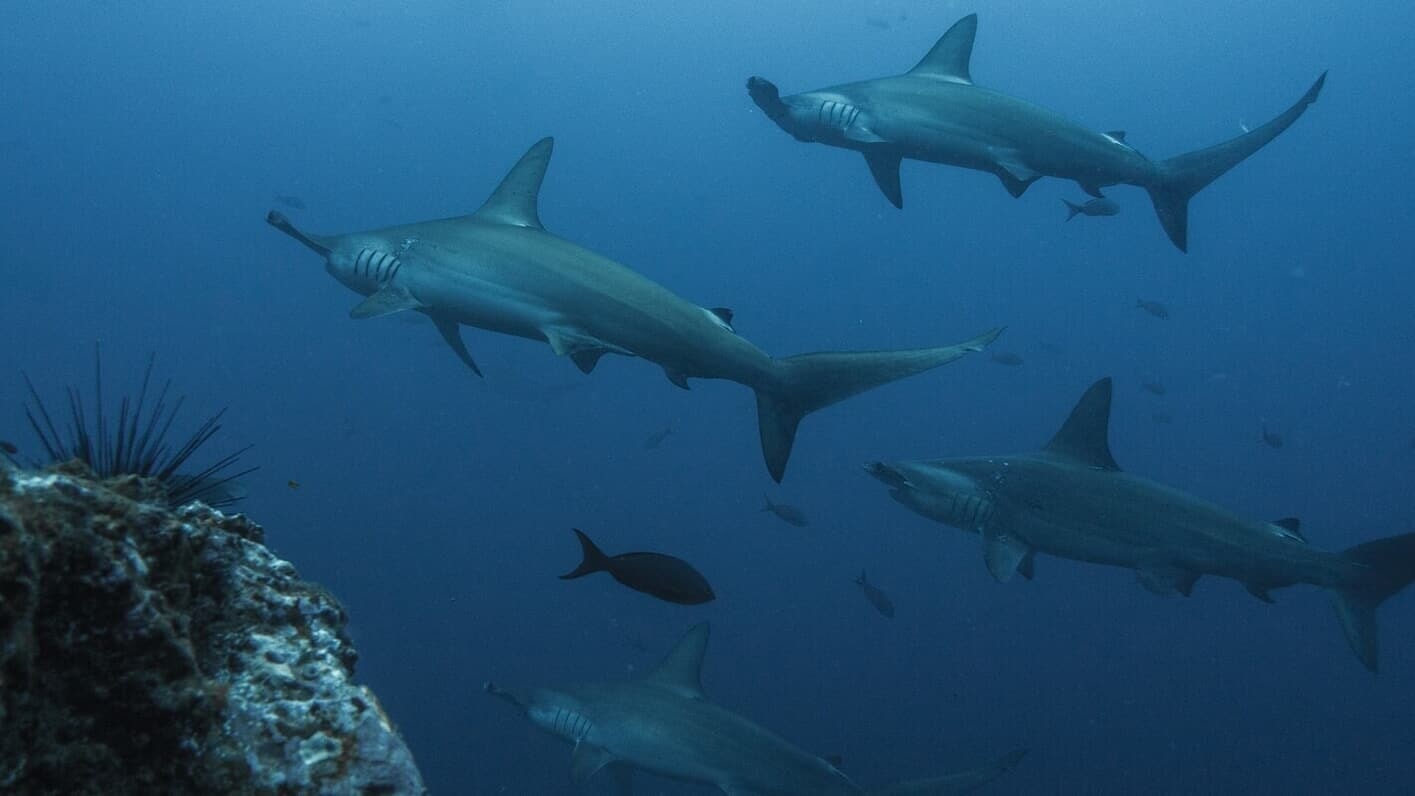
15. Diving in Cocos Island, an interesting activity in Costa Rica
Diving on Cocos Island is only for advanced certified Nitrox divers, as the currents here are strong. If you brave the waters, you’ll be able to dive alongside hundreds of hammerhead sharks, millions of different types of fish, and manta rays.
If you need some alternatives, our Costa Rica diving guide has got you covered. Certified divers can take this tour to Caño Island from Drake Bay, and this tour to the Catalina Islands from Tamarindo. This dive in the Gulf of Papagayo from Playa Hermosa is also very good.
If you don’t have the PADI certification, you can get certified in Tamarindo. That way you will be able to dive anywhere in the world.
In case you don’t want to get certified yet, this Scuba Diver Discover Tour in Playa Flamingo or Tamarindo is a great option to start with.
16. Carara and Río Tárcoles National Park, two unique places to visit in Costa Rica
Carara National Park is the only transitional forest in the Pacific, where dry and humid forests coexist. As such, it’s home to a privileged array of flora and fauna that you won’t find anywhere else. It’s a particularly great place to visit in Costa Rica if you enjoy bird-watching.
Here, you can observe countless birds in their natural habitat, including the beautiful and endangered scarlet macaw. Carara National Park serves as a sanctuary for this bird species, and thanks to our naturalist guide, Ronald, we were able to see it.
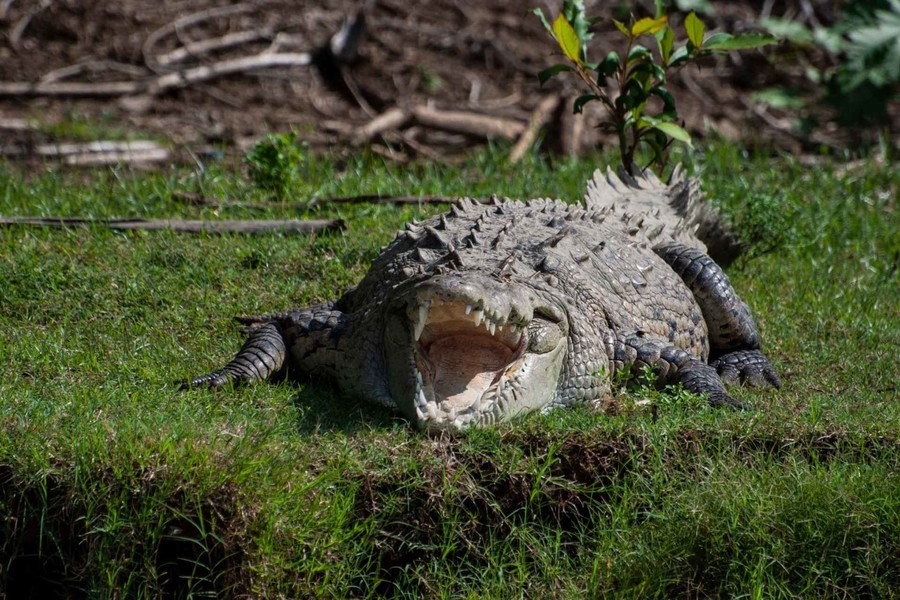
16. Carara and Río Tárcoles National Park, two unique places to visit in Costa Rica
If you visit Carara on your own, you should know that the park consists of four interconnected trails: the Universal Access Trail, the Encounter of Ecosystems Trail, the Quebrada Bonita Trail, and the Las Aráceas Trail. Together, the paths create a circular 4.5-km (2.8-mile) route. The Las Aráceas Trail is the best area to spot birds, although if you don’t have a trained eye, you might not be able to spot them through the thick vegetation. This is why I recommend hiring a guide.
On the other hand, the Laguna Meándrica Trail is a linear 4-km (2.5-mile) route where you can see crocodiles. You can also venture outside the park and go to the Tárcoles River Bridge next door, which has even more crocs and is free to visit.
The Crocodile Bridge on the Tárcoles River has become a popular tourist attraction in Costa Rica since it’s free to visit and completely safe. The American crocodiles here measure between 3 and 4 meters (9.8 and 13.1 feet), with some even reaching 7 and a half meters (25 feet). This tour from San José goes to Rio Tárcoles and Carara National Park, so it’s a great option if you don’t want to drive.
17. Irazú Volcano National Park, one of the most visited volcanoes in Costa Rica
Irazú Volcano National Park has become one of the most interesting attractions in Costa Rica, thanks to its convenient location just 50 kilometers (30 miles) from San José. The Irazú Volcano is one of the most impressive volcanoes in Costa Rica, and the highest, reaching 3,432 meters (11,260 feet).
To visit this volcano, you can go to one or both sectors of Irazú Volcano National Park: the Craters sector and the Prussia sector.
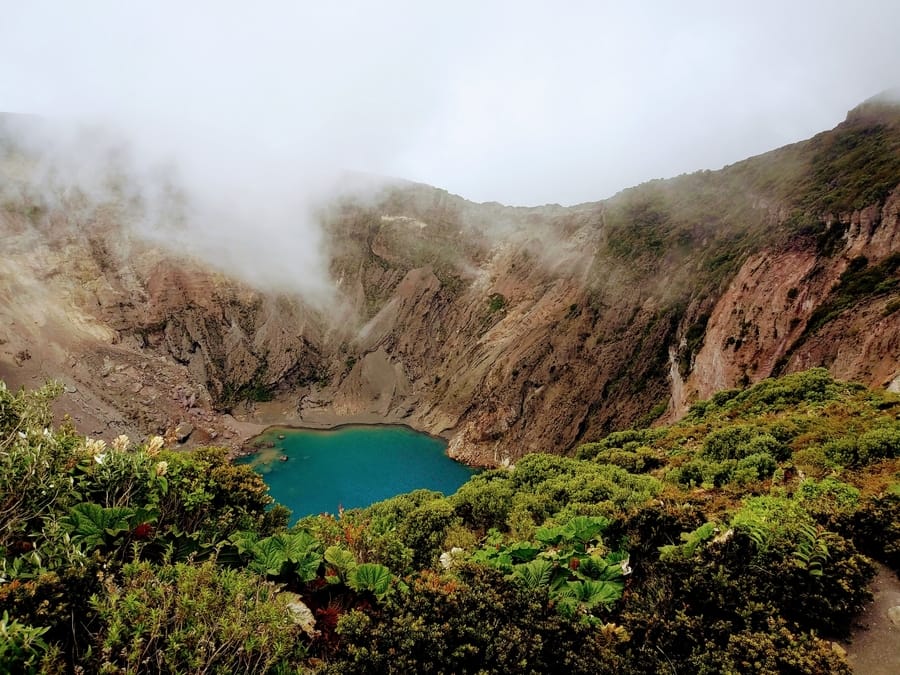
17. Irazú Volcano National Park, one of the most visited volcanoes in Costa Rica
From the Craters sector, you can see the five craters of the Irazú Volcano, including the main crater, which becomes an emerald-green lake during the rainy season. The Diego de la Haya crater also becomes a beautiful lagoon after heavy rains. While you’re here, you can also walk through the Playa Hermosa crater, which is covered in volcanic ash.
The Prussia sector is mostly dense forest. There are 16 kilometers (10 miles) of interconnected trails here: El Roble, Micaela, La Gruta, Chiverrales, Cabeza de Vaca, El Ahorcado, El Puma, and Los Abuelos. The main attraction is the “haunted tree” along the Los Abuelos trail, which you can reach from El Roble or El Puma trails.
In our case, we decided to take this tour from San José since it also passes through Cartago, one of the coolest cities in Costa Rica, especially for those who like art. Cartago was the country’s capital until 1823 and is home to fascinating places in Costa Rica, like the Basilica of the Virgin of the Angels and other colonial monuments.
18. Tortuga Island, one of the best spots in Costa Rica that you can’t miss
Isla Tortuga is located off the southeast coast of the Nicoya Peninsula, so it’s only accessible by boat. The quickest way to get there is with this tour from Paquera. Of course, Tortuga Island has become a popular Costa Rican destination, so there is also this tour that departs from Arenal, La Fortuna, Guanacaste, Manuel Antonio, and Monteverde, or this other tour that departs from San José. Both excursions include your boat ticket and round-trip bus transportation.
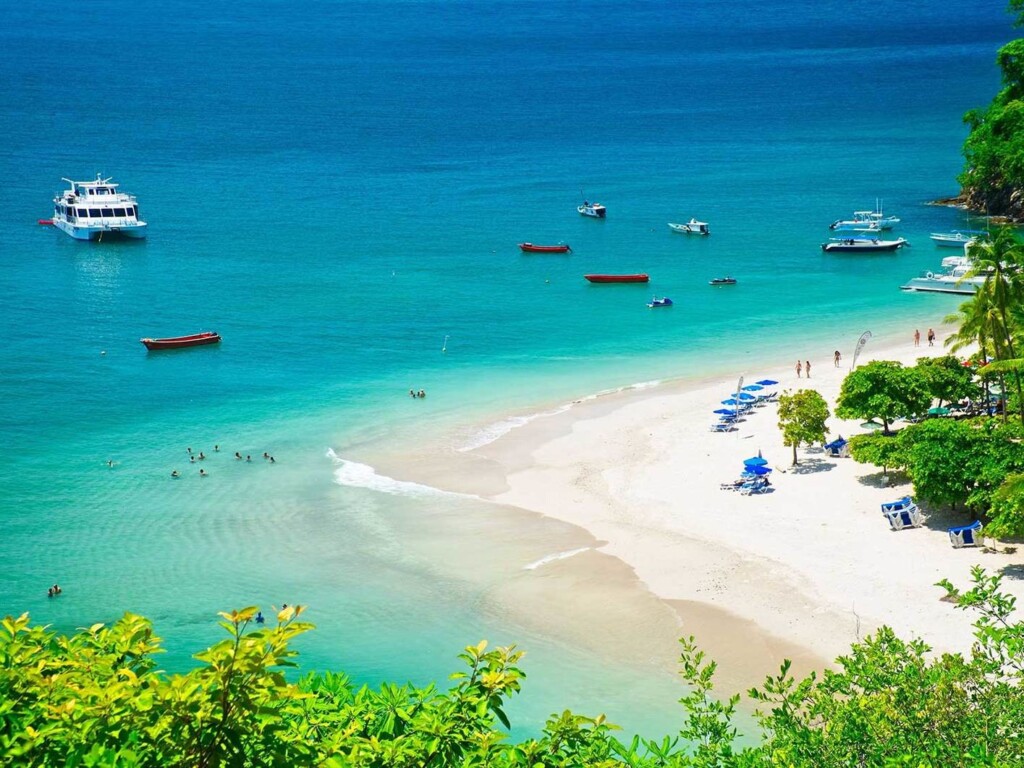
18. Tortuga Island, one of the best spots in Costa Rica that you can’t miss
Isla Tortuga may be small, but it’s a spectacular natural paradise that you won’t want to miss. Keep in mind that you can’t spend the night here, but there are countless activities that you can sign up for during the day.
In addition to relaxing on the beach, you can stroll along the Sendero de Los Poetas trail, go jet skiing, paddle board, or ride a banana boat. This is also an excellent place to go snorkeling or diving, as the transparent turquoise waters contain all kinds of marine life.
19. Go surfing in Santa Teresa and other Nicoya Peninsula beaches
Surfing is one of the best things to do in Costa Rica, and the country is known around the world as a top surfing destination. Its Pacific and Caribbean beaches have excellent waves and a quiet natural environment that anyone can enjoy.
Places like Santa Teresa are a paradise for surfers. This town is in the Pacific, at the western end of the Nicoya Peninsula, and boasts a stunning white sand beach. Plus, there are several schools where you can take surfing lessons, making this a great spot for all skill levels.
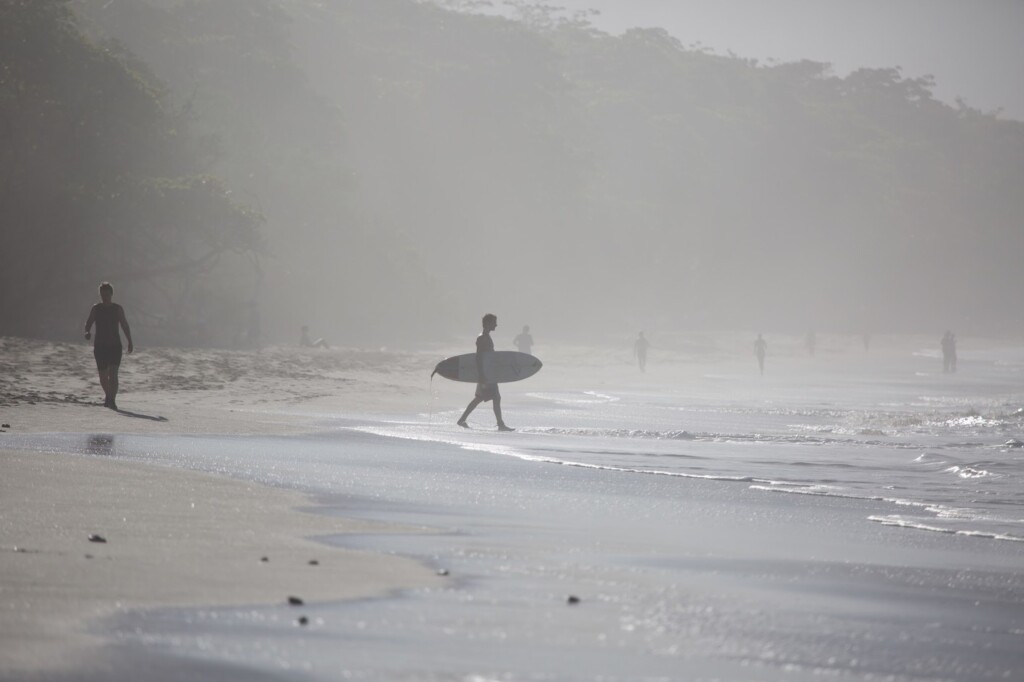
19. Go surfing in Santa Teresa and other Nicoya Peninsula beaches
Tamarindo is another prime surfing destination in Costa Rica, with beautiful tropical beaches, large waves, and a relaxed atmosphere. Pros flock here for the ideal surfing conditions, while beginners often sign up for these surf classes.
Some other popular surf spots on Costa Rica’s Pacific coast include Uvita, where you can attend this surf school and go whale-watching, as well as Jacó, which offers these classes. Even Manuel Antonio has good waves for all levels, and you can take surf lessons there, too.
The Caribbean coast doesn’t have as many surf schools, but if you’re an experienced surfer, you’ll find plenty of excellent waves. You can even try your luck at the Salsa Brava wave, the largest and most powerful wave in the country, located in Puerto Viejo. There are also good waves for professionals at Playa Cocles and Manzanillo.
20. Rincón de la Vieja National Park, another fun place to visit in Costa Rica
Rincón de la Vieja National Park is just 60 km (37 miles) from Liberia, or about a 1.5-hour drive away. It’s named after its main attraction, the Rincón de la Vieja Volcano, the only active crater in Guanacaste and the largest.
Despite being close to Liberia, the 160km2 (61mi2) park feels isolated and remote. Also, you should know that it’s divided into two parts: the Las Pailas Sector and the Santa María Sector.
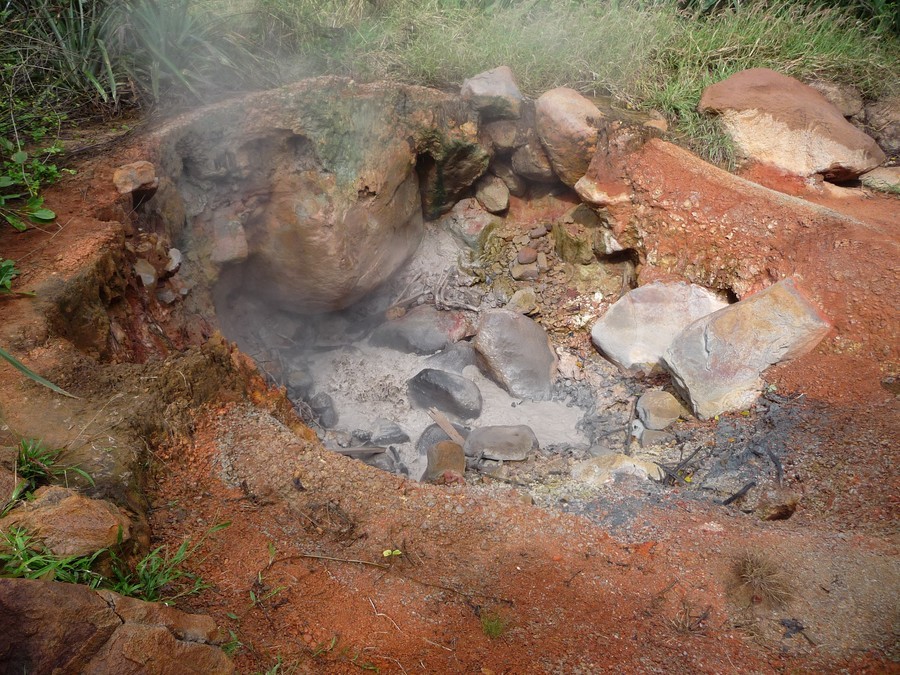
20. Rincón de la Vieja National Park, another fun place to visit in Costa Rica
Las Pailas has a trail network that includes the Las Pailas Circular Trail, which goes past volcanic mud pools, hot springs, and a small volcano. You can also take a hike to the La Escondida or La Cangreja waterfalls. The Oropendola waterfall is the closest one, but it’s equally as beautiful. Las Pailas also has a route leading to the crater, but it’s currently closed due to volcanic activity.
The Santa María Sector is a 30-minute drive away and home to the Santa María mansion. Here, you can hike the Colibrí trail, go to the Bosque Encantado waterfall, and enjoy the cool-water pools and hot springs.
If you’re short on time, this day tour from Guanacaste will take you to the best places in the park.
20+1. Excursion to Bocas del Toro (Panama), something to do in Costa Rica if you have time
Bocas del Toro is a natural paradise located northeast of Panama, about 40 kilometers (25 miles) from the Costa Rican border. It’s very popular thanks to its myriad recreational activities, dreamy beaches, nightlife, and fauna. It was a must-see during our Costa Rica trip, and we spent 3 days there. However, I wouldn’t recommend it unless you’re doing at least a 10-day tour of Costa Rica.
The easiest way to get to Bocas del Toro is from Puerto Viejo, so if you want to take a detour to Panama, add this town to your Costa Rica itinerary.

20+1. Excursion to Bocas del Toro (Panama), something to do in Costa Rica if you have time
The rental car company we used wouldn’t let us take the vehicle to Panama, so we took this shuttle to Bocas de Toro. It was super quick and simple, with one van taking us to the border, and another taking us to the dock, where we boarded the boat to Puerto Valencia on Isla Colón.
Isla Colón is the main island of Bocas del Toro, and we loved exploring its gorgeous scenery. We particularly liked Estrella de Mar Beach, where you can see starfish from the shore, and Bluff Beach, where turtles nest from September to March.
From Isla Colón, there are various excursions to other islands within the archipelago, and this is how locals get around. We took advantage of the opportunity to visit Isla de Bastimentos, a quiet island full of flora and fauna like the famous red frog.
Where to stay in Costa Rica
When deciding where to stay in Costa Rica, you have options for every type of trip and budget.
For example, in Santa Teresa, we stayed at the Canaima Chill House, one of the most recommended hostels in Costa Rica. It may be cheap, but it’s super comfortable and perfect if you plan to spend most of your time outdoors.
If you’re planning a honeymoon or want to treat yourself, there are many luxury hotels in Costa Rica. My favorite is the Mawamba Lodge in Tortuguero National Park.
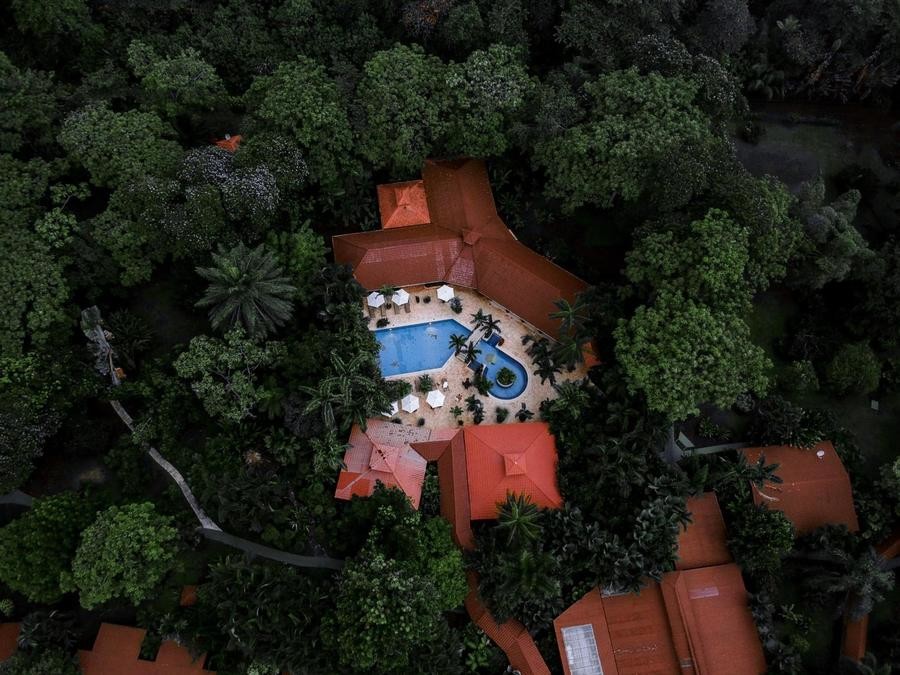
Where to stay in Costa Rica
You’ll also find many all-inclusive Costa Rican hotels in the beach areas. For example, the Occidental Papagayo, near Playa Hermosa in Guanacaste, is amazing both in terms of entertainment and dining options.
On the other hand, if you want to make yourself at home, consider renting an apartment in Costa Rica. I like Los Pinos Cabins & Reserve in Monteverde, which has a kitchen so you can prepare your own meals.
Finally, the Urban Green Hotel & Suites is one of the best hotels in Costa Rica and is conveniently located in San José. If you’re flying in late or have an early-morning departure, the Hampton By Hilton San Jose Airport is great.
How to get around Costa Rica
While we fell in love with this country, I must admit that getting around Costa Rica can be complicated. You can rent a car or use public transportation, but be aware that the infrastructure isn’t great, so the roads aren’t always clear or well-marked. Don’t worry, though; you can learn from my experience!
If you don’t mind driving on less-than-ideal roads, I recommend renting a car in Costa Rica. Just make sure it’s a 4WD vehicle so you can navigate some tougher roads (this is especially important during the rainy season in Costa Rica). Also, we ran into some traffic issues, so it’s a good idea to factor in more travel time than what the GPS or Google Maps suggests.
I also recommend getting a SIM card for Costa Rica so you can use Google Maps and other apps, as well as keep in touch with loved ones. We have a complete guide on how to get Internet in Costa Rica, but I’ll tell you here that we love the Holafly eSIMs, which have unlimited data. If you decide to buy one, use our Holafly discount code to save some money.
Remember that you can also book a nice hotel in San José and take advantage of the day tours that depart from the capital city. There are plenty of excursions in Costa Rica that allow you to see the main attractions without having to worry about transportation. You can even book a Costa Rican vacation package and take all the planning off your shoulders.
Lastly, while public transportation is the cheapest option, I don’t recommend it unless you’re spending quite a bit of time here. I wouldn’t consider it for trips of less than a month, and certainly not for a 7-day trip to Costa Rica. The local buses make countless stops, so even if you’re traveling a short distance, it seems to take forever. As a last resort, you can book a private transfer. This service isn’t cheap, but it comes with the freedom of having a car without the headache of driving around Costa Rica.
Costa Rica map
To finish up, here is a map with all the attractions in Costa Rica that I recommended. I also suggest consulting our tourist map of Costa Rica, which will help you plan your itinerary around this beautiful country:
That’s it from me! I hope you feel better prepared to plan your trip to Costa Rica, and that you have the time of your life. The magical places in Costa Rica left me in awe, and I can’t wait to come back here for even more adventures.
If you have any questions or want to share your favorite things to do in Costa Rica, leave a comment below. I can’t wait to hear what you think!
Pura Vida!


